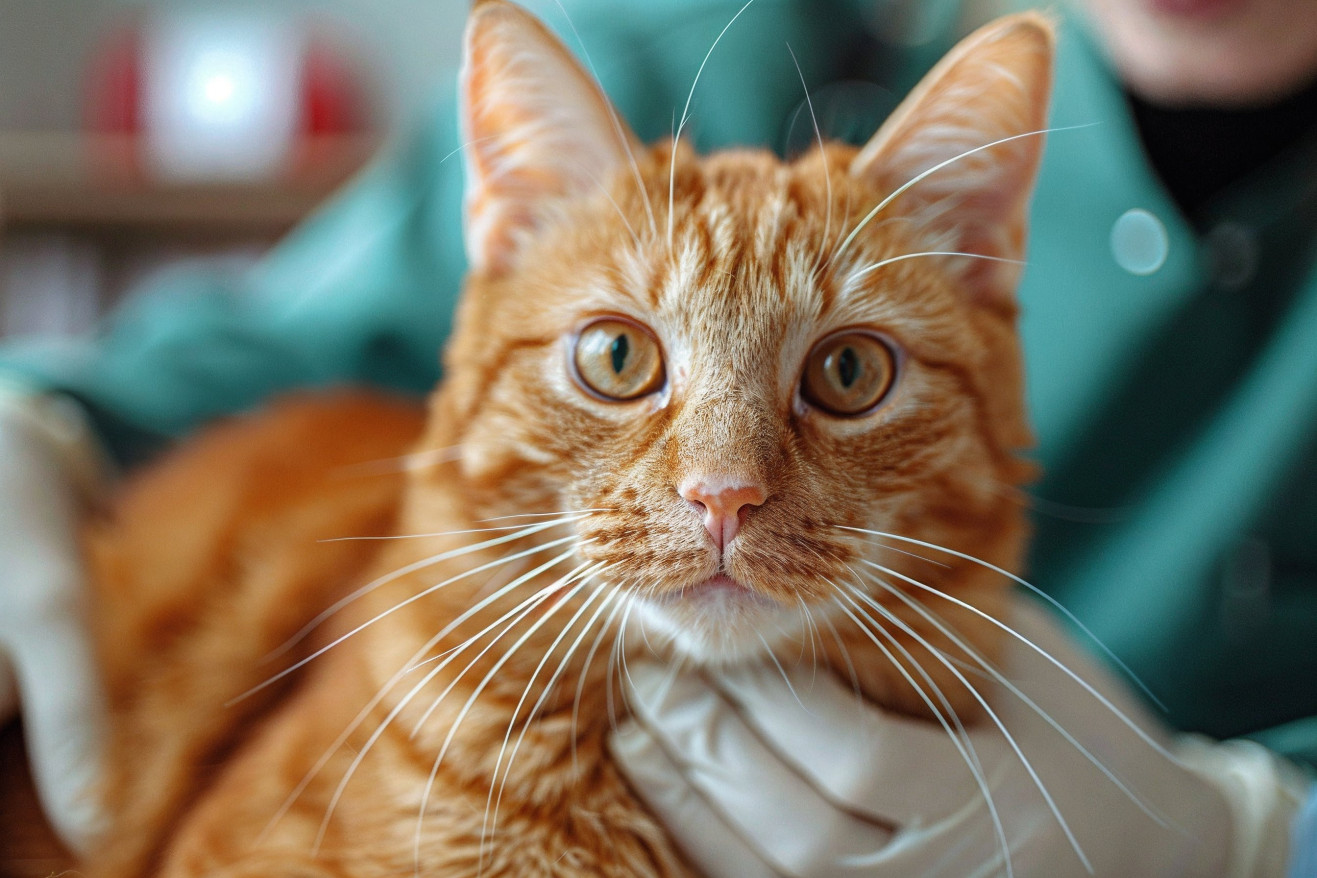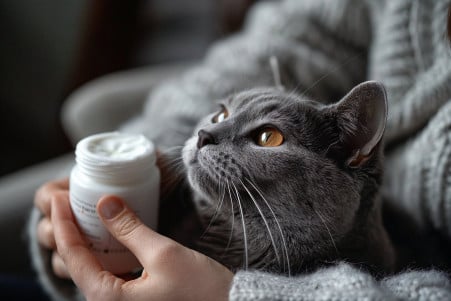Skin Tags in Cats: Causes, Treatment, and More
18 May 2024 • Updated 17 May 2024

If you've noticed skin growths on your cat, you may be wondering if they're skin tags or something more serious. Skin tags, or acrochordons, are small, harmless growths that hang off the skin and are common in cats, especially as they get older - caused by collagen buildup and friction, they are typically benign but can bleed if irritated.
By examining research from veterinary dermatology and feline biology, we can learn more about the causes, characteristics, and potential concerns of skin tags in cats. This evidence-based information will help you better understand what's normal and when to be concerned, enabling you to know when to seek treatment if your cat's skin tags seem worrisome or are bothering them.
Do cats get skin tags?
Understanding the Causes and Risk Factors
While the exact cause of skin tags in cats is often unknown, several factors can contribute to their development. Friction is a common culprit, as skin tags frequently form in areas prone to rubbing, like the armpits, leg joints, and abdominal folds. Weight gain can also increase friction and the risk of developing these harmless growths.
Age also seems to be a factor, as cats' skin becomes looser and more susceptible to friction as they age, according to PetMD. In addition, hormonal imbalances, including both high and low levels, can impact the body and lead to the formation of skin tags.
Some breeds appear to be genetically predisposed to skin tags and other growths. The Merck Veterinary Manual explains that Persians, Himalayans, and Siamese cats are at a higher risk for basal cell tumors and other skin conditions. In addition, skin tags may be more likely to develop in cats with diabetes due to insulin resistance.
In the end, many of the factors that contribute to the development of skin tags in cats are likely to be a combination of factors rather than a single, clear cause. Regular vet visits can help keep an eye out for any concerning growths and any potential conditions that could be contributing to them. While they are often not a big deal, knowing the risk factors can help cat owners stay on top of their care.
How to Tell Skin Tags Apart From Other Skin Growths
Skin tags in cats are generally long, narrow, and stick out from the skin. According to Vetster, they feel soft and are typically the same color as the cat's skin. They can be smooth or bumpy, and while they can become irritated or bleed if they are scratched or rubbed, they won't change in color, shape, or size otherwise.
Although skin tags can look like other skin growths, including warts, moles, and even ticks, Catster explains that they are a specific type of harmless skin growth. Skin tags are less common than many other skin conditions in cats, and their cause is not well understood. However, PetMD says that skin tags are more common in older cats and are rare in kittens.
Because skin tags can be mistaken for more serious skin growths, it's important for cat owners to have their cats' skin lesions checked out by a vet. They can confirm that the growths are skin tags and let you know if any further action is needed.
Treatment Options: When and How to Address Skin Tags
According to the Southside Veterinary Hospital, many small skin tags are harmless and may not need to be treated. However, if the skin tag is causing irritation, bleeding, or affecting the cat's comfort, removal may be necessary.
Veterinarians can remove skin tags in a number of ways. Southside Veterinary Hospital says that they can use cryosurgery to freeze the skin tag off, a process that is virtually painless for the animal. Puainta adds that surgical removal, where the tag is excised or cut off, may be an option, especially for larger or more problematic skin tags.
In some cases, topical treatments may be used to help with any inflammation or irritation caused by a skin tag, according to Waggel. However, it's important to note that at-home removal is not recommended and can be dangerous, leading to complications like infection or excessive bleeding.
Instead, it's best to have a veterinarian look at any new or worrisome skin growths to get an accurate diagnosis and find the best and safest treatment plan. As Southside Veterinary Hospital points out, it's important to get professional veterinary care to ensure your cat's health and happiness.
How to Avoid and Keep an Eye on Skin Tags in Cats
While skin tags can't be completely avoided in cats, there are ways to help lower the risk. The Spruce Pets suggests keeping your cat at a healthy weight, as being overweight and the friction it causes can lead to skin tags. It's also important to make sure that any underlying conditions like diabetes that can make skin tags more likely are being managed.
In addition, regular grooming and checks can help make sure that you catch any new skin tags early or notice any changes in existing ones. PetMD explains that as cats age, their skin becomes more susceptible to developing benign growths, so it's important to stay on top of this. If you notice any changes in a skin tag's size, shape, color, or if it seems to be bothering your cat, make sure to get your cat to the vet as soon as possible.
Getting ahead of skin tags and treating them early can be helpful, as Catster explains that some skin tags may need to be removed if they become painful or start to impact your cat's quality of life. With regular care and attention, you can make sure that your cat's skin stays healthy.
Conclusion: How to Deal With Skin Tags in Cats
While skin tags in cats can't be completely avoided, there are some things you can do to help lower the risk. One of the most important things you can do is to help your cat maintain a healthy weight. This is because being overweight can lead to friction, which can cause skin tags. It's also important to make sure that any underlying health conditions, like diabetes, are being managed, as these conditions can increase the risk of skin tags.
In addition to these things, regular grooming and checks can help you keep an eye on your cat's skin and notice any new or changing growths. As cats get older, their skin is more likely to develop benign growths, so it's important to be vigilant. If you notice any changes in a skin tag's size, shape, or color, or if you notice that a skin tag is causing your cat irritation, make sure to take them to the vet as soon as possible.
Getting skin tags treated early can be helpful, as there are some cases where they may need to be removed if they're causing pain or getting in the way of your cat's quality of life. However, with the right care and attention, you can help make sure that your cat's skin stays healthy and that they stay comfortable.


